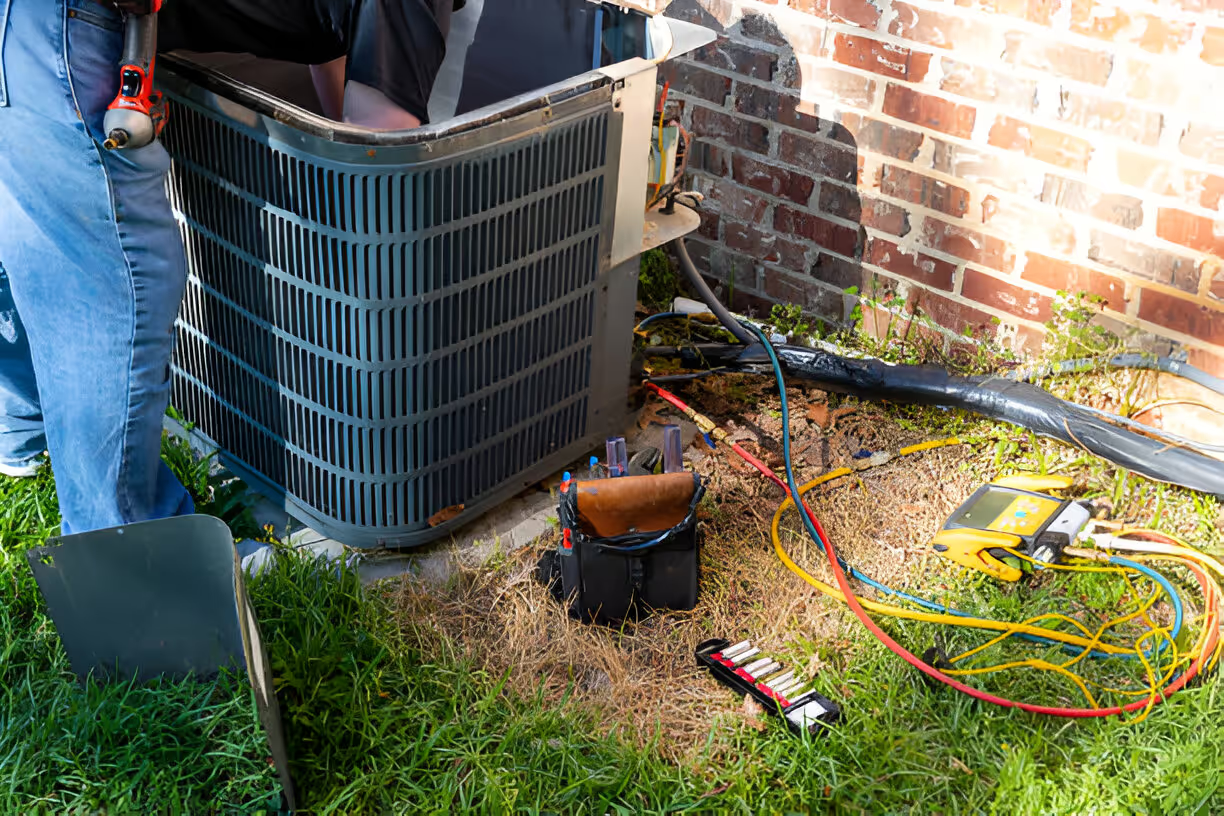Emergency AC Repair in Chandler, AZ
When your air conditioner fails in Chandler, AZ, it is not just an inconvenience — it can be a health and safety risk. Summers here regularly exceed triple digits, and prolonged downtime can endanger children, seniors, pets, and anyone with heat-sensitive medical conditions. This page explains what to expect from 24/7 emergency air conditioning repair in Chandler, AZ: common emergency scenarios, rapid-response and diagnostic procedures, temporary stabilization options, parts availability, safety protocols, and how emergency calls are prioritized.

Why 24/7 emergency AC repair matters in Chandler, AZ
Chandler’s high heat, seasonal humidity spikes, and summer monsoon storms create conditions that strain cooling systems. Frequent cycling, dusty environments, and power surges during storms increase the likelihood of sudden failures. Having access to reliable 24/7 emergency AC repair minimizes risk of heat-related illness, limits property damage from failed systems, and often prevents more costly system replacements later.
Common emergency AC issues in Chandler homes
- Compressor failure or short cycling during peak heat
- No cooling despite a running system (often refrigerant leak or compressor problem)
- Complete system shutdown after storms or power outages (electrical faults)
- Blower motor failure or fan motor lockup causing no airflow
- Frozen evaporator coil that suddenly defrosts and then stops cooling
- Strange burning smell or visible smoke indicating electrical fire risk
- Water leaks from clogged drains causing interior damage or mold risk
- Thermostat or control board failures leaving system unresponsive
Rapid-response procedures for emergency calls
- Remote triage: Before dispatch, technicians typically perform a quick phone checklist to determine severity — is anyone at risk, is the issue total loss or intermittent, and has power been restored after outages.
- Prioritization: Medical vulnerability, extreme indoor temperatures, and commercial critical loads (like server rooms) receive highest priority.
- Technician dispatch: Emergency teams are assigned using local routing to reach Chandler neighborhoods quickly, carrying diagnostic gear and a stock of common replacement parts.
- Arrival protocol: Onsite, the technician confirms the situation, secures the area, and communicates expected time to diagnosis and stabilization steps.
Diagnostic process explained in plain language
Technicians follow a step-by-step diagnostic workflow to find the root cause without guessing:
- Visual inspection of indoor and outdoor units for obvious damage, debris, or burned components.
- Check thermostat settings and power sources — breakers, fuses, and disconnect switches.
- Confirm airflow — filter condition, blower function, and duct obstructions.
- Measure refrigerant pressures and temperatures to detect leaks or compressor problems.
- Test electrical components — capacitors, contactors, motors, and control boards.
- Evaluate condensate drain and pan for blockages causing water overflow.Diagnostics are performed with safety-first practices and explained to you in clear terms before any work proceeds.
Temporary stabilization steps technicians may use
When a permanent repair requires parts or additional work, certified technicians can often stabilize the system to restore safe function:
- Reset breakers and replace blown fuses where appropriate and safe.
- Replace failed capacitors, contactors, or relays from stocked truck parts to get the unit running immediately.
- Bypass failed control circuits temporarily while protecting against overloads, allowing cooling until full repairs are completed.
- Isolate and contain refrigerant leaks and recommend the safest next steps (temporary charging is only a short-term measure and not a long-term solution).
- Set up temporary airflow or supplemental cooling recommendations for high-risk occupants while parts are sourced.
Homeowner-safe interim actions often recommended
- Close blinds and limit heat gain in the hottest rooms.
- Use fans and move vulnerable occupants to the coolest area.
- Turn off power to the unit at the breaker if you smell burning or see smoke.
- Avoid attempting electrical or refrigerant work yourself.
Parts availability and replacement options
Technicians serving Chandler typically carry a wide inventory of commonly failing parts on their trucks — capacitors, fan motors, contactors, relays, filters, and basic electrical components. For major items like compressors, coils, or specialized circuit boards, same-day replacement depends on parts availability and stock levels. When OEM parts are not immediately available, trusted aftermarket options may be used temporarily with an explanation of trade-offs. In many cases, technicians can order expedited parts and provide a short-term stabilization to keep your home safe while awaiting the permanent repair.
Safety protocols technicians follow
- Electrical isolation and verification before touching any wiring or components.
- Proper discharge of capacitors and lockout-tagout procedures for safety.
- Use of personal protective equipment and insulated tools for all electrical work.
- EPA-certified handling of refrigerants and adherence to environmental regulations.
- Clear communication about any immediate hazards and steps taken to mitigate them.
How emergency service calls are prioritized in practice
Emergency repair services triage requests to allocate resources effectively:
- Priority 1: Life-safety situations — homes with young children, elderly, immunocompromised occupants, or medical equipment requiring cooling.
- Priority 2: Complete system failures in extreme temperature conditions.
- Priority 3: Commercial facilities with critical operations affected.
- Priority 4: Non-life-threatening issues where delay does not significantly increase risk.This approach ensures the most vulnerable customers in Chandler receive the fastest possible response when systems fail during extreme heat or storm events.
Preventing emergencies and long-term benefits
Timely emergency response reduces immediate risk and can prevent expensive system damage. Regular seasonal maintenance before Chandler’s summer months reduces emergency calls by identifying worn capacitors, low refrigerant, dirty coils, and failing motors early. Simple homeowner maintenance also helps: change filters regularly, keep outdoor units clear of debris and landscaping, install a smart or programmable thermostat to avoid undue cycling, and consider whole-home surge protection to protect sensitive controls during monsoon storms.
Emergency AC repair in Chandler, AZ is about fast, safe, and effective solutions that prioritize vulnerable occupants, stabilize systems quickly, and return your home or business to safe, comfortable conditions. When an emergency happens, understanding the diagnostic steps, temporary fixes, parts expectations, and safety procedures lets you make informed decisions while technicians work to restore reliable cooling.






